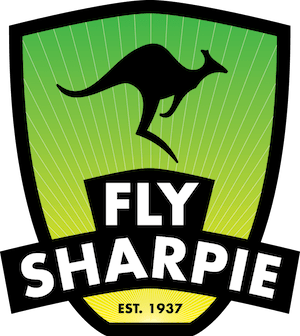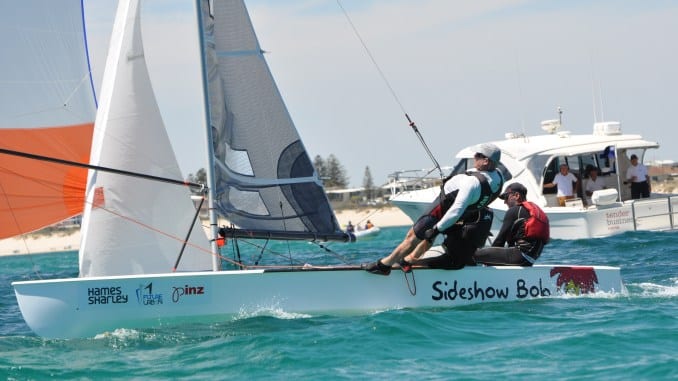We run a SuperSpar mast which I believe is a touch stiffer than others on the market. It sets up really well for us in those mid range conditions which you do most of your racing in. Our mast is set up so we can fully remove it from the boat after each time we sail this is done by having SK99 dyneema strops coming out of the deck which attach to our sidestays above deck. We also run a zipper luff jib which operates on a separate jib halyard to the forestay. This enables us to save our jib condition plus allows the tack of the jib to remain in a constant position when moving rakes. It is super important to use the best quality rope you can afford. Any stretch just makes sailing that little bit harder! The sails we chose to run for the regatta were a set of John Clifton plus we had a Dave Alexander main and a North jib which we used under about ten knots. I felt with the Dave A main we could carry a lot more sheet tension without closing off the leech and the North jib is much finer on the entry which makes it harder to drive but was quick in those lighter condition. As soon as we had a bit of bump and the wind came up the Clifton set was very quick and had plenty of drive. This was the set we used majority of the nationals with the conditions we had. It is also worth noting we use a traveller over the end boom sheeting, personal preference!
Throughout the nationals I was asked numerous times about where our spreaders were at (length and poke). I was always happy to give out the length (410mm) but the poke is a different story. Each boat is different where their stays enter the deck and even some boats have their spreaders at different heights to others on the mast. The one thing I will tell you is that we run 20-25mm pre bend. This is measured at the spreaders with the tension on 30 on a pt-2 loos gauge at our most upright setting. Our rakes are run from 25’8” as our furthest forward and we go back from there. Just remember all these things vary depending on crew weight, sails and rig but this should give you a good starting point generally. We do adjust our spreaders but ask me personally if you’d like to go into those details further.
I thought I’d also mention a few handy tips I have come across through sharpie sailing and other boats alike which have helped us. The first thing through watching some 505 videos I have learnt is never make the mast do something it’s not meant to do. Most common two being never to absolutely rip on the third stay to bend the lower mast, this will just straighten the top of the mast. Likewise with the lowers in a breeze never let them off to bend the bottom of the mast. You just make the top of the sail full and make the boat tippier. We have also experimented a lot more with jib cars this year carrying them a fair way inboard when we have the boom central then once dropping sheet we continue to move them outwards. You can still do this on the older boats with the slots in the deck. Downwind when we are in soak mode we tend to use a fair bit of leeward barbahaul keeping the block about a foot from the deck generally to keep the clews sitting even. Please note we use a cliffo kite and this might be different for others. Another helpful hint I have for when we are sailing angles downwind is for the helm to pick their gybe angles by looking through the back of the boom. Not always exact depending on where you sit but after some trial and error you’ll pick your own little thing to look at and you avoid those average angles coming into bottom marks a lot more.
Once your rig is set up right, go sailing and work tirelessly on your crew balance. We also got asked a lot how we seemed to point high and my answer most times is just crew balance from time in the boat. Of course our rig is tuned nicely but I can guarantee we spent less time sliding sideways than a lot of boats around us just from keeping the boat flat more often than not. Thirdly, go out with a boat that is of similar standard to you. Mark everything on your boats the same and tell each other everything. Try something different and see if you’re quicker or slower because by the time nationals comes around if you’re slow it’s too late to fix.
As I’ve mentioned, feel free to contact me if you ever have a question and I’ll endeavour to answer if I have the knowledge to do so. Keep sending the long boats and hopefully we see you next year in Mounts Bay for the Wild West!
Luke Stephens
Helm, SA934 Sideshow Bob
2018/19 Australian Sharpie National Champions


